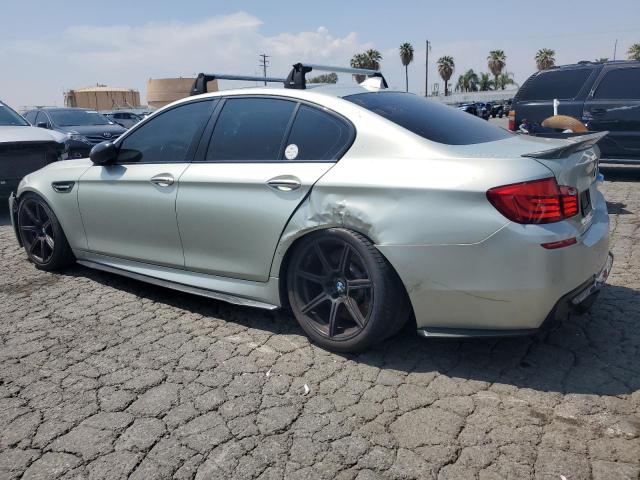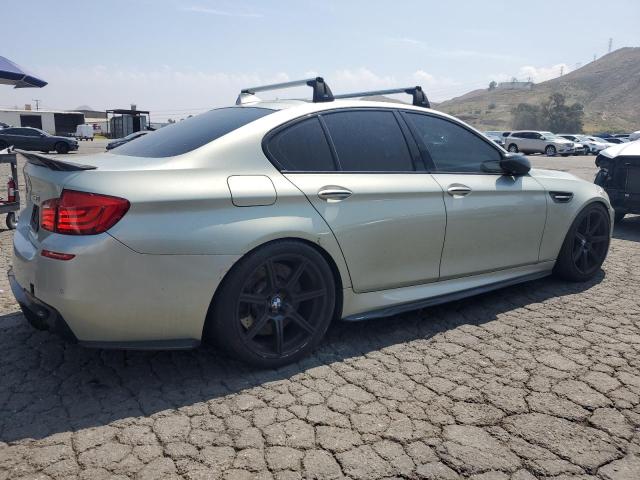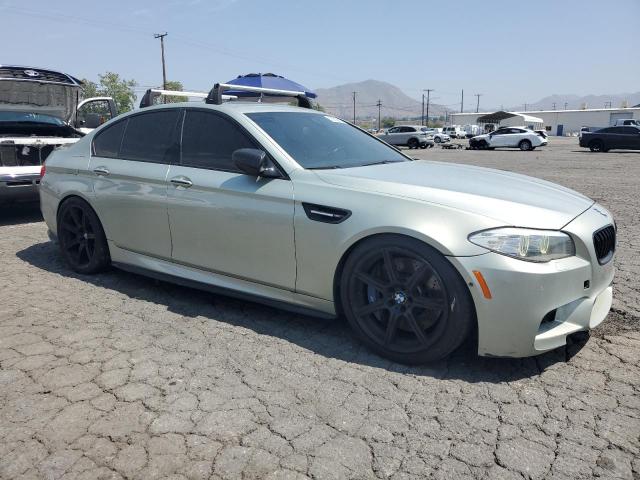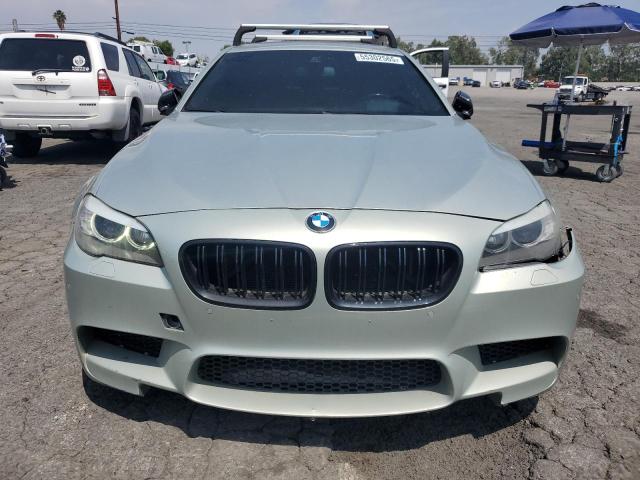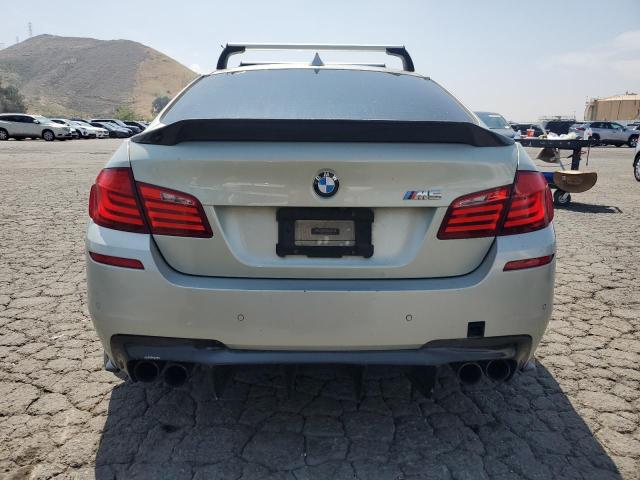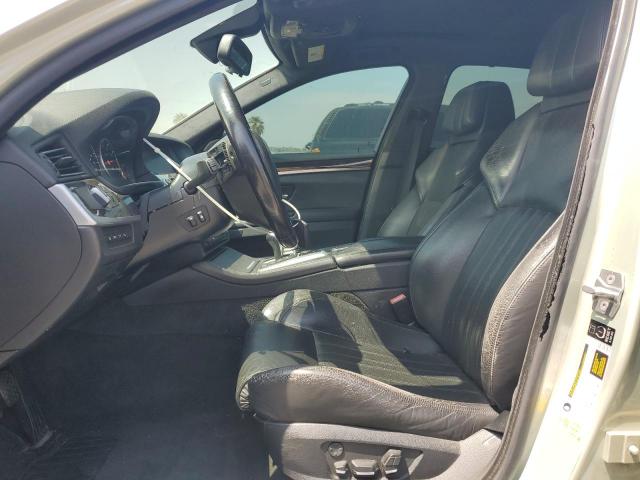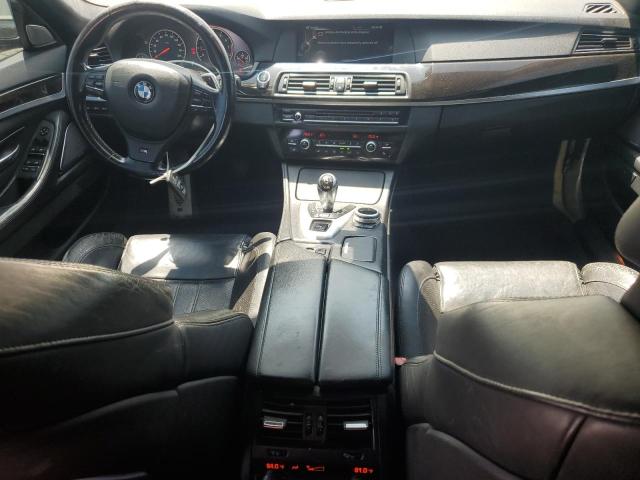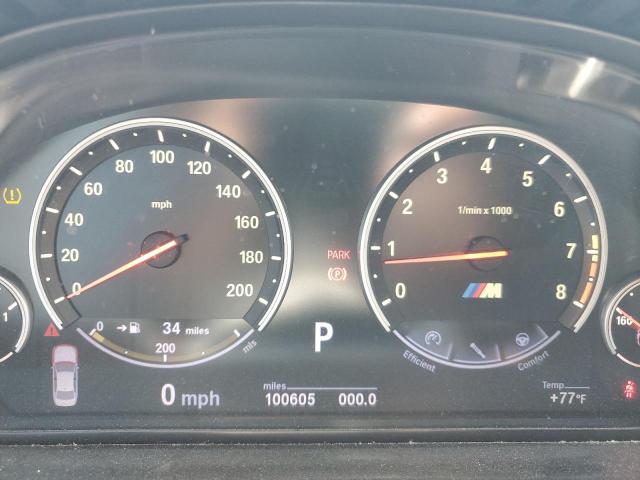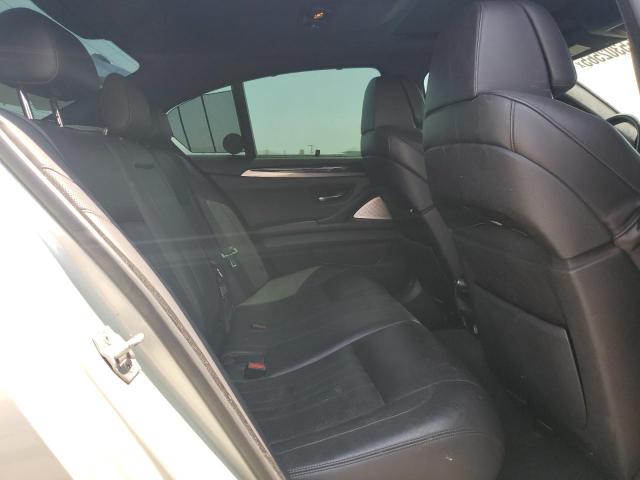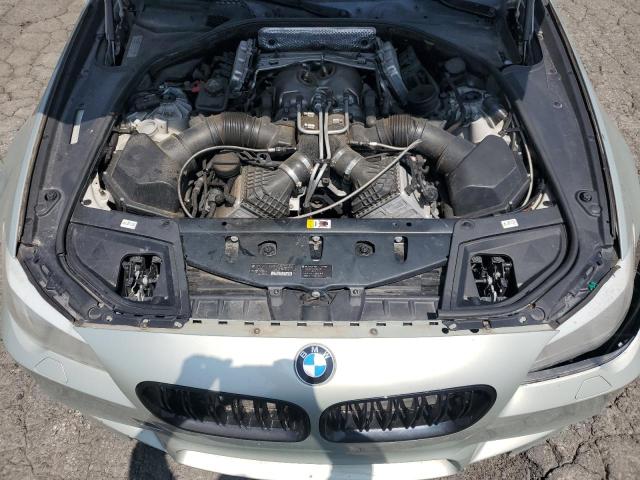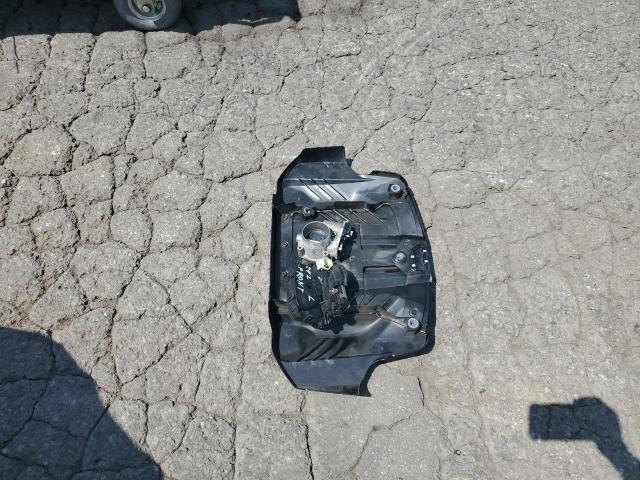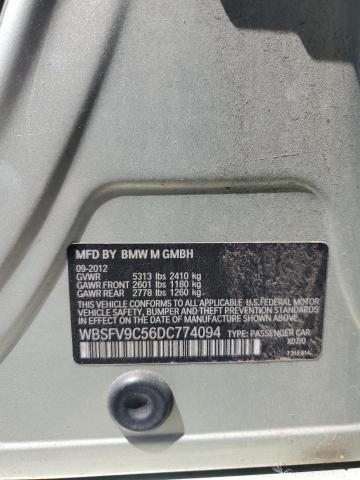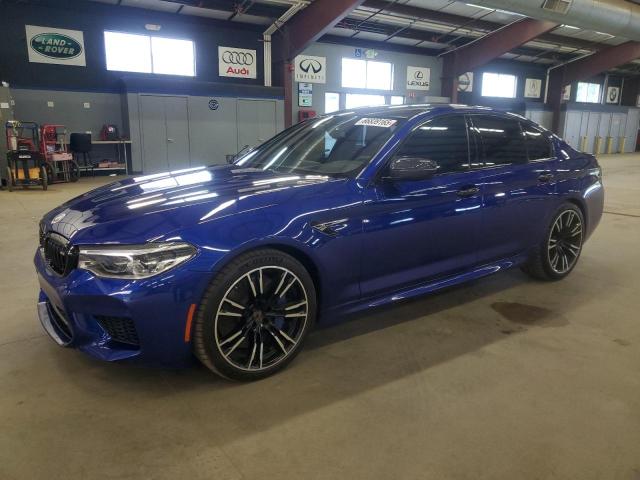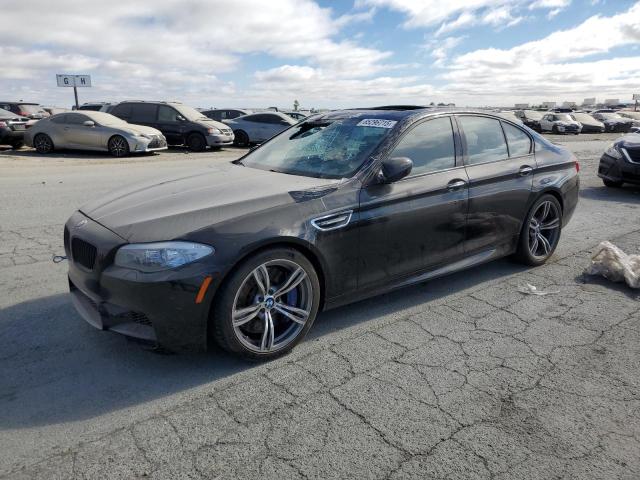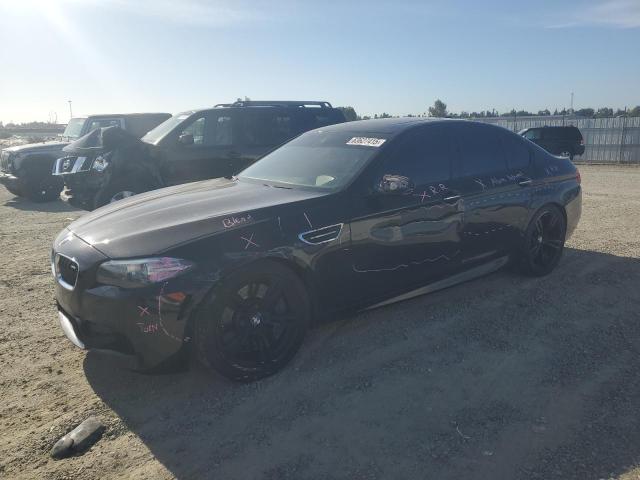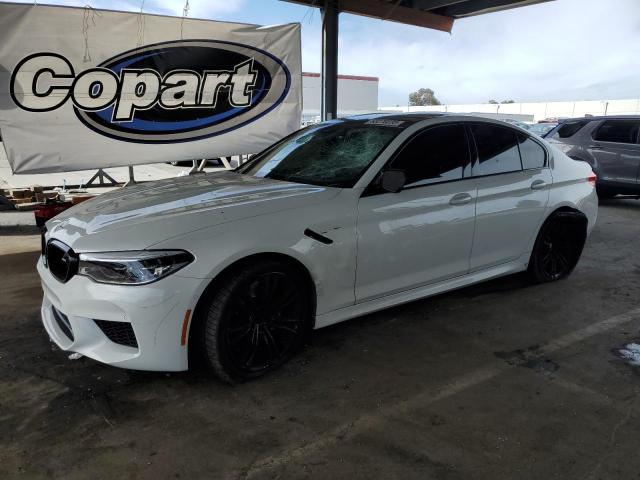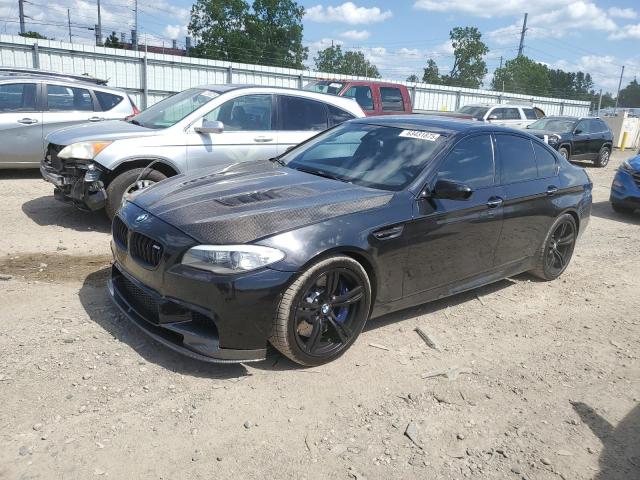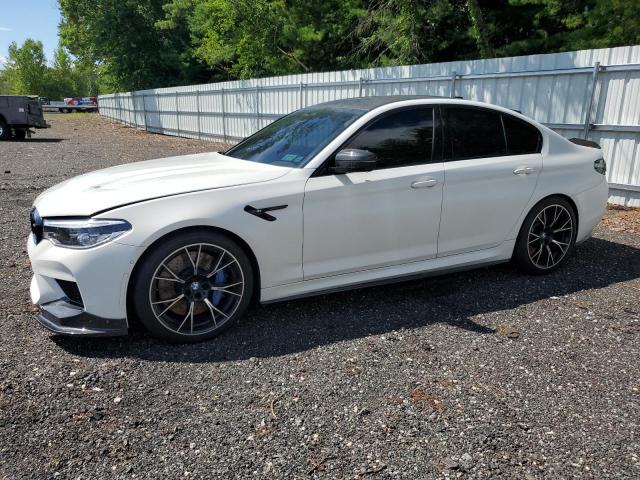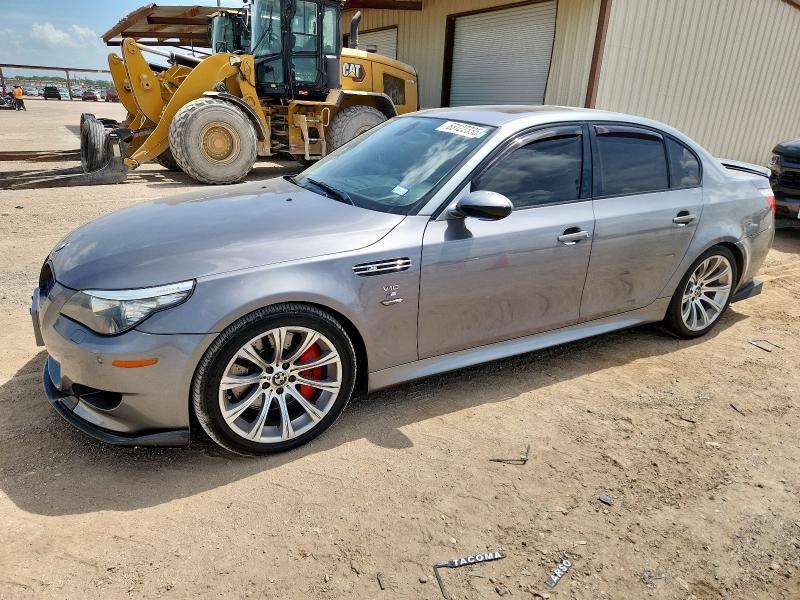2013 BMW M5 | WBSFV9C56DC774094
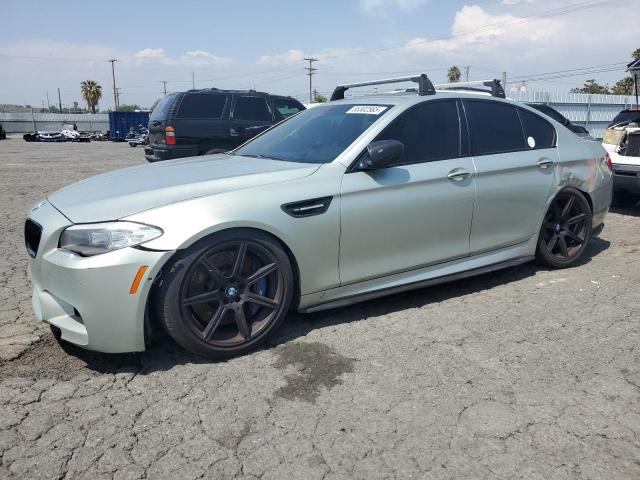 ❯
❯Lot details
- Sale Date2025-05-08
- Lot Number55302565
- Sale documentCA - DIS/DLR/EXP ONLY CLEAN TITLE (P)
- LocationCA - SAN BERNARDINO
- Odometer100,605 miles (161,908 km)
- Primary DamageFRONT END
- Secondary DamageREAR END
Vehicle specifications
2
~$110,000
Engine: 4.4L twin-turbocharged V8 (S63TU)
Torque: 680 Nm
0–100 km/h: ~4.1 s
The F10 M5 redefined the concept of a high-performance executive sedan by bringing twin-turbo power to the M5 lineage for the first time. Its 4.4L twin-turbocharged V8 (S63TU) delivered 560 hp in standard trim and up to 600 hp in later Competition Package models, with peak torque of 680 Nm. The result was 0–100 km/h in just 4.1 seconds, or quicker in real-world testing — making it faster than the previous M5 V10 despite being heavier and more refined.
Power was sent to the rear wheels via a 7-speed dual-clutch transmission (DCT) or an optional 6-speed manual in the U.S., and traction was managed by an Active M Differential. The Competition Package, introduced in 2014, sharpened throttle response, added revised suspension tuning, a louder exhaust, quicker steering, and recalibrated stability control — transforming the F10 from fast cruiser to corner-carving sports sedan.
While not as raw as the legendary E39 M5, the F10 excelled in real-world usability, brutal torque delivery, and Autobahn confidence. It could devour long distances in silence or blitz through mountain passes with precision — depending entirely on how it was configured through the M Drive system.
Final Bid BMW M5 (2013)
$10,100
$13,375
$18,000
Body Styles
The F10 M5 was offered exclusively as a four-door sedan, based on the sixth-generation BMW 5 Series. It featured a subtle but aggressive exterior: wider front fenders, larger intakes, signature quad exhaust tips, and a rear diffuser. Compared to standard 5 Series models, it sat lower, wore unique M bumpers, and had special M side mirrors and badging.
Its long, wide, and elegant proportions hid its performance potential well — making it a favorite among those seeking discretion with devastating capability. The design was clean and understated, with M-specific flourishes for enthusiasts in the know.
Model Name Meaning (Manufacturer)
“M” stands for Motorsport, BMW’s performance division, while “5” places the model in the 5 Series executive sedan segment. The M5 nameplate has represented the pinnacle of four-door performance and everyday usability since its debut in the 1980s.
Model Name Meaning (Languages)
The “M5” badge is instantly recognizable in the automotive world, symbolizing precision, performance, and luxury. The alphanumeric naming is global, elegant, and clearly positions the car within both the brand’s hierarchy and the enthusiast landscape.
Body & Interior Colors and Rims
The BMW M5 (F10) featured a curated range of exterior colors that balanced executive subtlety with unmistakable M presence. Standard finishes included Alpine White, Black Sapphire, and Singapore Grey, while more expressive metallics like Monte Carlo Blue, Imperial Blue, Silverstone II, and Space Grey added a refined edge. More extroverted tones like Sakhir Orange, San Marino Blue, and Imola Red were available through the BMW Individual program, alongside unique matte finishes such as Frozen White, Frozen Bronze, and Frozen Blue Metallic – offering a satin sheen over the muscular M5 silhouette.
The interior of the F10 M5 emphasized high-performance luxury, wrapped in Extended or Full Merino Leather upholstery. Standard options included Black, Silverstone, and Sakhir Orange, with available Individual leathers in tones such as Platinum, Cohiba Brown, and Amaro Brown, often paired with contrast stitching or piping for added visual richness. Decorative trims spanned from Brushed Aluminum and Fineline Anthracite Wood to Piano Black, Carbon Fiber, and BMW Individual wood veneers like Plum Brown or Eucalyptus Smoke Grey. Signature M touches included the M logo-embossed headrests, multifunction sport seats, M steering wheel with aluminum shift paddles, and custom M gauge cluster with red-ringed dials.
Wheel options were equally performance-oriented, starting with standard 19-inch M Double-spoke Style 345M alloys in Ferric Grey, and optional 20-inch forged Style 343M wheels in Graphite Grey or Machined Silver. The wheels were paired with Michelin Pilot Super Sport tires and sat over massive blue-painted M compound brakes or, optionally, gold calipers with M Carbon Ceramic Braking System – easily distinguishable both visually and dynamically.
Top Expensive Options
- Competition Package (600 hp, revised suspension, sports exhaust): $7,300
- M Carbon Ceramic Brakes: $9,250
- BMW Individual Paint and Interior (Custom): $4,000–$10,000
- Executive Package (Soft-Close Doors, Heated Rear Seats, Head-Up Display): $2,800
- Bang & Olufsen High-End Surround Sound System: $3,700
- Driver Assistance Plus (Lane Departure, Blind Spot, Cameras): $1,900
- Adaptive LED Headlights with Auto High Beam: $1,400
- Full Merino Leather with Contrast Stitching: $3,500
- Rear Seat Entertainment System: $2,200
- Night Vision with Pedestrian Detection: $2,300
vs Competitors
The F10 M5 went head-to-head with the Mercedes-AMG E63 (W212), Audi RS7, and Jaguar XFR-S. The AMG had more aggressive exhaust and available AWD, but the BMW countered with sharper chassis balance and more refined steering. The RS7 was more tech-heavy but less engaging. The M5’s true edge lay in its customizability, twin-turbo torque curve, and duality — a car that could be docile or deadly with a press of an M button.
Though heavier and more insulated than its predecessors, the F10 M5 offered a blend of performance and comfort that few could match. It remained one of the fastest, most tunable sedans of its era, with stage 1 tunes pushing it well past 700 hp reliably.
Fun Fact
The S63TU engine in the F10 M5 was shared with the X5 M, X6 M, and later tuned for the F90 M5 and M8 Competition — making it one of BMW’s most powerful and enduring powerplants. In testing, real-world 0–100 km/h times dipped below 3.9 seconds, and tuned examples became cult favorites in the drag racing and roll-racing scenes, with builds exceeding 1,000 hp.



